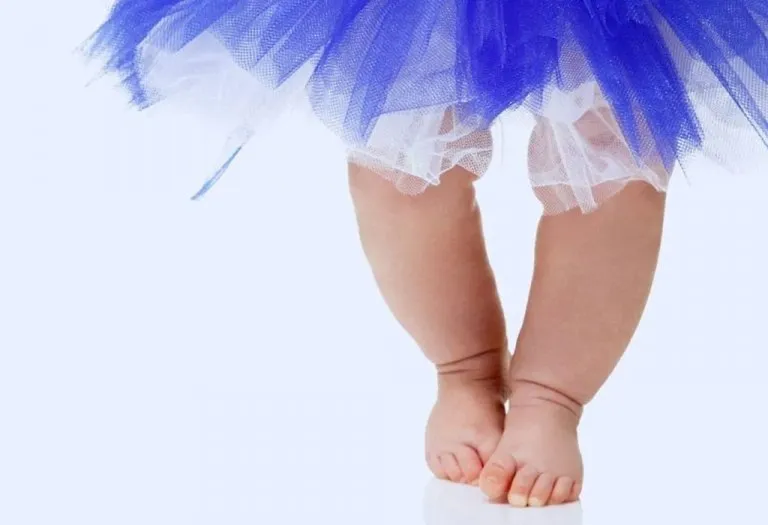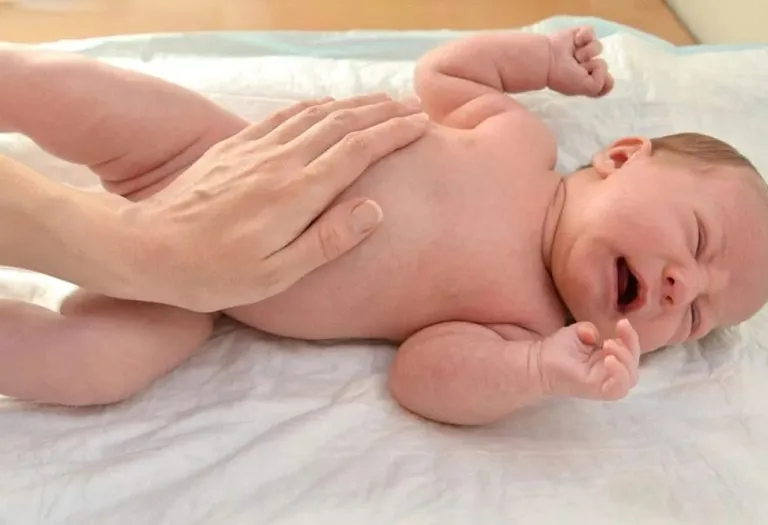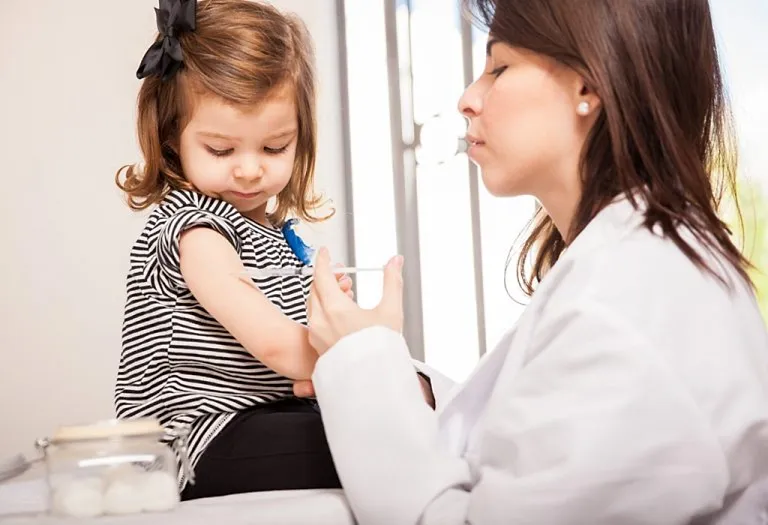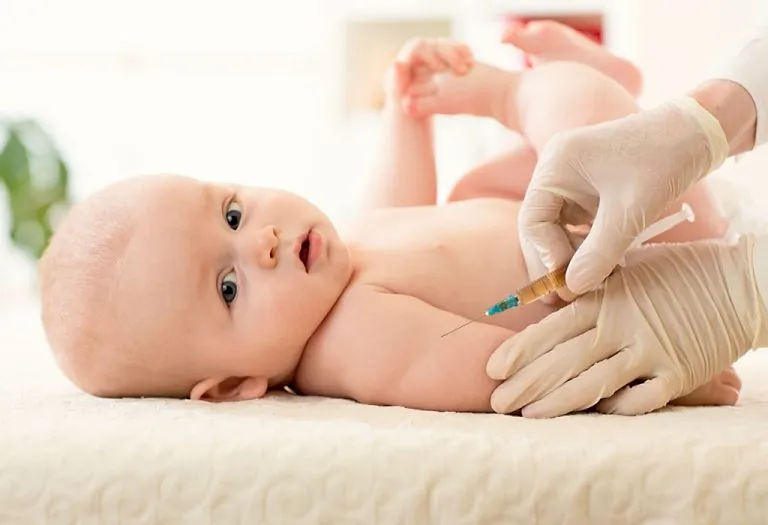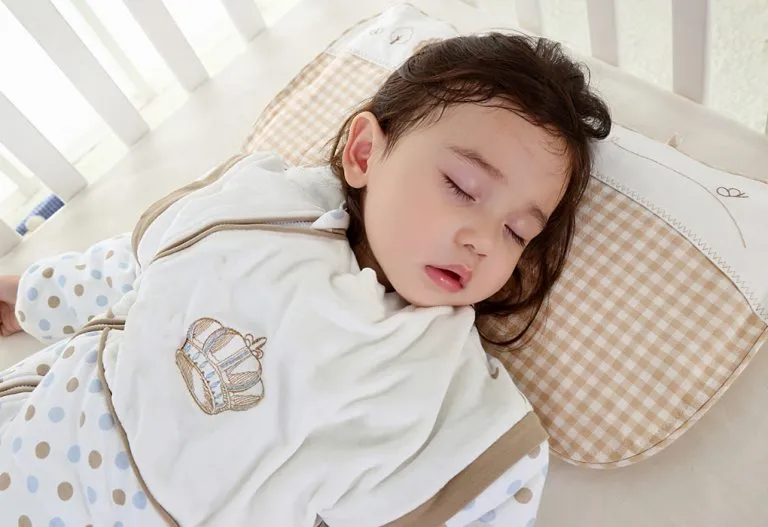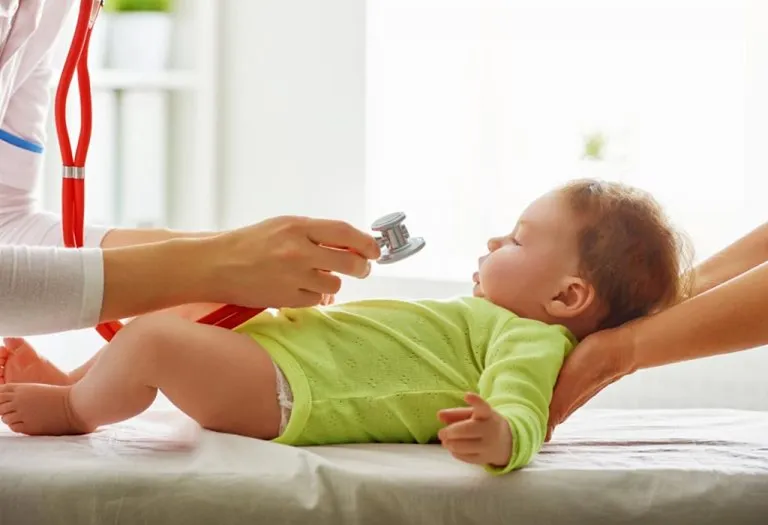Bowed Legs in Babies – Causes, Diagnosis and Treatment

- What Does Bowed Legs Mean?
- Are Bowlegs Normal In Babies?
- Symptoms of Bow-Leggedness in Babies
- What Causes Bow Legs in Babies
- What Makes Babies Prone to Developing Bowed Legs
- How Long Does This Condition Last?
- Diagnosis of Bowed Legs in Infants
- Treatment for Bowed Legs
- What If the Bowed Legs Are Left Untreated?
- When Should You Worry?
- Tips to Look After Children With Bowed Legs
- FAQs
When babies first stand up and take their initial steps, it’s a momentous milestone that fills their parents with immense pride and joy. However, occasionally, some children exhibit a common variation in development where their legs are curved outward or, conversely, knocked knees, which is the opposite condition where the knees touch, but the ankles do not. Observing your baby’s legs are bowed can initially cause concern, but it’s important to understand that this can be a normal part of child development. If you notice that your child displays this health condition, termed bow-leggedness in babies, it’s crucial to arm yourself with knowledge about what bowing of legs in infants means, its causes, and the treatments available.
What Does Bowed Legs Mean?
Bowed legs in infants is a situation wherein a child’s feet and ankles touch, but not his knees. It starts becoming noticeable as the child tries to stand.
Are Bowlegs Normal In Babies?
Bowed legs are perfectly normal in children, especially when they’re just learning to walk. But they can become a concern over time. Most bow legged newborns have bowed legs because of the foetal position, but it normally corrects itself over time (1). As children develop better muscles in their legs and learn how to stand and walk, their legs straighten out.
Symptoms of Bow-Leggedness in Babies
Bowed legs are easily noticeable in children. When your child’s legs don’t straighten out even after toddlerhood, it’s a cause for concern.
The symptoms of bow-leggedness in babies include:
- Awkward walking pattern (i.e. not direct or forward). There may either be either in-toeing or out-toeing. The feet may point inward instead of pointing straight while walking or running or the feet may curve outward instead of pointing straight.
- Lack of coordination in movement
- Moderate pain or discomfort
What Causes Bow Legs in Babies
So why are babies bow-legged? As mentioned above, bowed legs are quite normal in children because of the position they’ve been in in the womb. Their legs haven’t had time to straighten out. According to the American Academy of Orthopaedic Surgeons, other causes of bow legged baby include (2):
1. Physiological Genu Varum
A variation in normal appearance across children that results in some toddlers appearing more bow-legged than others. There is symmetrical and painless bowing and this problem will resolve spontaneously without treatment, as a result of normal growth.
2. Blount’s Disease
A disease resulting in the abnormal growth of the tibia (shinbone).
3. Rickets
A metabolic disorder that affects growth in children (3).
4. Bone Dysplasia
An uncommon hereditary condition wherein the growth of joints and bones is abnormal.
5. Deficiency of Vitamin D
A lack of vitamin D can weaken a child’s legs, causing them to become bowed.
6. Bowing Fractures
As a result of injury, this happens when the bone bends but doesn’t break and results in swelling or pain (4).
7. Lead or Fluoride Poisoning
It is a very rare process where lead or fluoride in the body poisons the tissue of the bone, creating more un-mineralized material in the bone and allowing it to weaken over time, potentially leading to bowing (5).

What Makes Babies Prone to Developing Bowed Legs
Bowlegs in toddlers and older children is often due to Blount disease. Blount disease is common in kids who:
- Are overweight
- Have started walking at an early age
- Have a family history of bowed legs
How Long Does This Condition Last?
Bowed legs normally last until 24 months after the baby begins to walk, usually disappearing by 3 years of age. If, however, the curve of your child’s legs appears to be extreme, mention it to your paediatrician at your next appointment.
Diagnosis of Bowed Legs in Infants
Your doctor will conduct a brief examination to see how severe the curve in the legs is. Then, he/she will look at your child’s medical history and conduct tests to determine what the issue may be.
In most of the cases, the diagnosis is as follows:
1. Physical Examination
The doctor will physically examine your child to observe the curve of the bow and determine the severity of the case.
2. Blood Test
Blood tests will be performed to determine if there’s a deficiency of vitamin D.
3. X-Ray
An X-ray may be conducted to rule out Blount’s disease.
4. Other Tests
The doctor may also try to rule out other diseases affecting the legs, such as rickets.
Treatment for Bowed Legs
Bowed legs are rarely treated, especially in children. Severely curved legs may require surgery, but this may only be done when the child is older. While braces and other corrective shoes have been used in the past, they are not recommended.
1. Non-Surgical Treatment Options
- For most children with bowed legs, they will be seen every six months by the doctor until the problem resolves itself.
- Consult a specialist for regular follow-ups and limit complications that include gait abnormalities, knee joint instability, meniscal tears and degenerative joint disease.
2. Surgical Treatment Options
- Guided Growth Surgery – A unique figure-eight shaped device allows gradual correction of the deformity. There are screws attached to the plate and the bone that help in decreasing the compression on the growth plate and allowing for increased flexibility. The growth plate restricts the bone growth to one side of the deformity. allowing the bone to gradually realign.
- Tibial Osteotomy – In this case, surgery is done on the shinbone via a cut just below the knee, and the shinbone is then reshaped to help correct its alignment. The bone is normally held in place by screws or some sort of plate during the recovery process.
What If the Bowed Legs Are Left Untreated?
Having bowed legs can cause complications later in life. These include:
- Arthritis
- Stress on the knees and hips
- Bone and joint problems
- Difficulty walking
When Should You Worry?
If your child’s legs remain bowed beyond three years of age, you may need to consult a specialist. Also, look for the following symptoms:
- Difficulty walking
- Problems with advanced forms of movement, like running
- Inability to stand upright
- Muscle and bone-related problems
Tips to Look After Children With Bowed Legs
Here are some things you should do if your little one has bowed legs:
1. Do Your Research
Read up about the condition online and understand what is affecting your child and how you can provide support.
2. Get Proper Shoes
Giving your child the right pair of shoes can help to manage bowed legs.
3. Ensure He Eats the Right Foods
Resolving diet and nutrition issues like vitamin D deficiency can increase the chances of your child’s bowed legs straightening out.
4. Keep Up the Doctor’s Appointments
Take your child to the specialist, and don’t miss the appointments!
5. Speak Positively
Focus on understanding your baby’s needs and offer them emotional support and stability.
6. Teach Your Child Yoga
Let your child do a few basic yoga asanas every day.
7. Pay Attention to Weight Management
If your child’s weight is worsening the condition of bowed legs, take steps to maintain his weight.
FAQs
1. How can I tell if my child’s bowed legs are normal or a sign of a problem?
While bowed legs in children usually resolve without intervention, it’s important to consult with a pediatrician if the condition seems to worsen, is markedly more severe on one side, persists beyond the age of 3 to 4, or if your child experiences pain, discomfort, or walking difficulties. A healthcare professional can assess the situation through a physical examination and, if necessary, further tests such as X-rays to determine the need for any specific treatments.
2. Can physical activities or exercises help correct bowed legs in babies and toddlers?
Physical activities and exercises are generally encouraged for healthy development in babies and toddlers but do not directly correct bowed legs if they are a result of natural growth patterns or genetic predispositions. Engaging in activities that promote strength and flexibility can be beneficial for overall health and development, but it’s important to note that the natural correction of bowed legs primarily occurs as part of the child’s growth process. However, for specific conditions or under medical advice, targeted physical therapy might be recommended to assist in correcting leg alignment or addressing muscle imbalances.
This was all about newborns with bowed legs. Bowed legs usually disappear by two years of age. This condition rarely requires surgery.
References/Resources:
1. Pediatric Bowlegs; Children’s National Hospital; https://www.childrensnational.org/get-care/health-library/bowlegs
2. Bowed Legs (Blount’s Disease); American Academy of Orthopaedic Surgeons; https://orthoinfo.aaos.org/en/diseases–conditions/bowed-legs-blounts-disease
3. Rickets and osteomalacia; NHS; https://www.nhs.uk/conditions/rickets-and-osteomalacia/
4. Tibial Pseudarthrosis: Incorrect Healing After a Pediatric Fracture of the Lower Leg; Hospital for Special Surgery; https://www.hss.edu/conditions_tibial-pseudarthrosis-overview.asp
5. Espandar. R, Mortazavi. Seyed; Baghdadi. T; Angular Deformities of the Lower Limb in Children (Asian Journal of Sports Medicine); National Library of Medicine; https://www.ncbi.nlm.nih.gov/pmc/articles/PMC3289162/; March 2010
6. Bow-legged (Genu Varum); Cedars Sinai; https://www.cedars-sinai.org/health-library/diseases-and-conditions/b/bow-legged-genu-varum.html
7. Bowed Legs (Genu Varum); Children’s Hospital Colorado; https://www.childrenscolorado.org/conditions-and-advice/conditions-and-symptoms/conditions/bowed-legs/
Also read:
Clubfoot (Talipes) In Babies
Infant’s Arms and Legs – What’s Normal and What’s Not
Hand, Foot and Mouth Disease (HFMD) in Babies
Was This Article Helpful?
Parenting is a huge responsibility, for you as a caregiver, but also for us as a parenting content platform. We understand that and take our responsibility of creating credible content seriously. FirstCry Parenting articles are written and published only after extensive research using factually sound references to deliver quality content that is accurate, validated by experts, and completely reliable. To understand how we go about creating content that is credible, read our editorial policy here.







